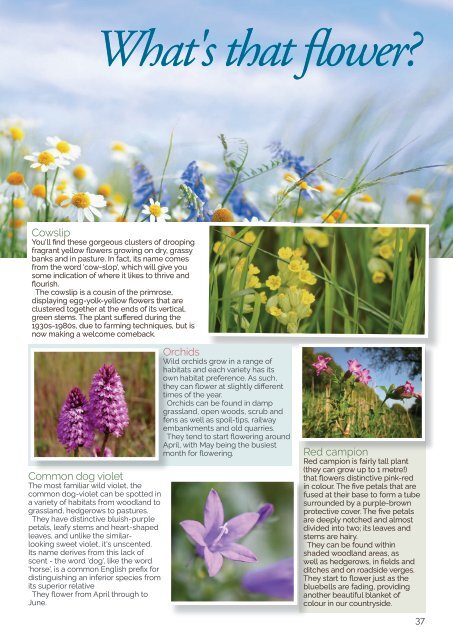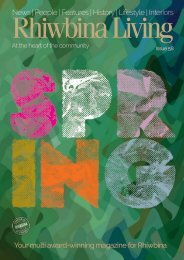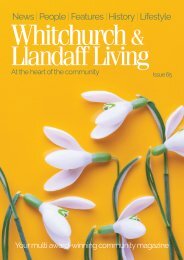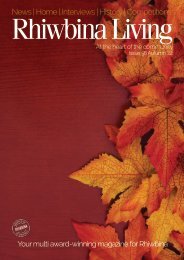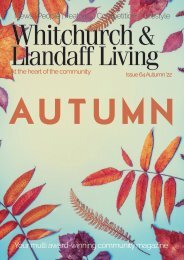Whitchurch and Llandaff Living Issue 62
Spring 2022 issue of the award-winning Whitchurch and Llandaff Living
Spring 2022 issue of the award-winning Whitchurch and Llandaff Living
You also want an ePaper? Increase the reach of your titles
YUMPU automatically turns print PDFs into web optimized ePapers that Google loves.
What's that flower?<br />
Cowslip<br />
You'll find these gorgeous clusters of drooping<br />
fragrant yellow flowers growing on dry, grassy<br />
banks <strong>and</strong> in pasture. In fact, its name comes<br />
from the word 'cow-slop', which will give you<br />
some indication of where it likes to thrive <strong>and</strong><br />
flourish.<br />
The cowslip is a cousin of the primrose,<br />
displaying egg-yolk-yellow flowers that are<br />
clustered together at the ends of its vertical,<br />
green stems. The plant suffered during the<br />
1930s-1980s, due to farming techniques, but is<br />
now making a welcome comeback.<br />
Common dog violet<br />
The most familiar wild violet, the<br />
common dog-violet can be spotted in<br />
a variety of habitats from woodl<strong>and</strong> to<br />
grassl<strong>and</strong>, hedgerows to pastures.<br />
They have distinctive bluish-purple<br />
petals, leafy stems <strong>and</strong> heart-shaped<br />
leaves, <strong>and</strong> unlike the similarlooking<br />
sweet violet, it's unscented.<br />
Its name derives from this lack of<br />
scent - the word 'dog', like the word<br />
'horse', is a common English prefix for<br />
distinguishing an inferior species from<br />
its superior relative<br />
They flower from April through to<br />
June.<br />
Orchids<br />
Wild orchids grow in a range of<br />
habitats <strong>and</strong> each variety has its<br />
own habitat preference. As such,<br />
they can flower at slightly different<br />
times of the year.<br />
Orchids can be found in damp<br />
grassl<strong>and</strong>, open woods, scrub <strong>and</strong><br />
fens as well as spoil-tips, railway<br />
embankments <strong>and</strong> old quarries.<br />
They tend to start flowering around<br />
April, with May being the busiest<br />
month for flowering.<br />
Red campion<br />
Red campion is fairly tall plant<br />
(they can grow up to 1 metre!)<br />
that flowers distinctive pink-red<br />
in colour. The five petals that are<br />
fused at their base to form a tube<br />
surrounded by a purple-brown<br />
protective cover. The five petals<br />
are deeply notched <strong>and</strong> almost<br />
divided into two; its leaves <strong>and</strong><br />
stems are hairy.<br />
They can be found within<br />
shaded woodl<strong>and</strong> areas, as<br />
well as hedgerows, in fields <strong>and</strong><br />
ditches <strong>and</strong> on roadside verges.<br />
They start to flower just as the<br />
bluebells are fading, providing<br />
another beautiful blanket of<br />
colour in our countryside.<br />
37


